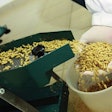Industry discussions on effectively replacing livestock antibiotics are never ending as new feed additives keep appearing in the animal agribusiness market. Now that high animal feed prices are making it difficult to profitably raise pigs and poultry, many farmers are looking for ways to remove additives that do not have a strong performance record.
When it comes to antibiotic replacements, organic acids and plant extracts are carefully scrutinized because both are expensive (even though within each category there is a wide range of prices). Part of the problem is that there is still considerable confusion on which one can be removed with impunity—assuming feed formulas already contain both products.
In my experience, certain blends and a couple of straight organic acids have always given good results, assuming one is prepared to pay the price for those acids and the high inclusion level required to elicit the full response from such additives. In the case of plant extracts, I have seen a few effective products, but scientific and practical results—remain highly variable.
I believe, in the case of organic acids we deal with rather simple compounds that have already become commodities. For plant extracts we have to look at brand-specific results. For example, a cinnamon extract in product A may not be the same ingredient as in product B, in the same way lactic acid is the same ingredient no matter what brand is on the bag.
I would be really interested to read your comments from product users as well as manufacturers, so that we can enhance our understanding of these antibiotic replacements.














